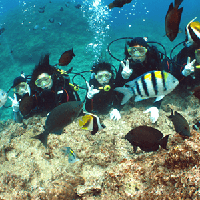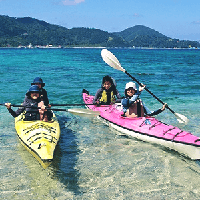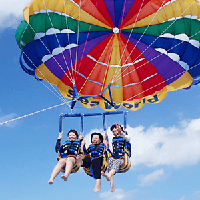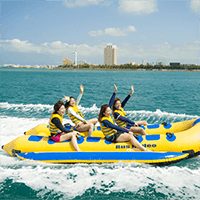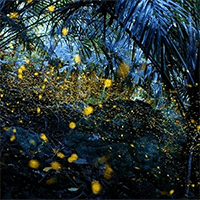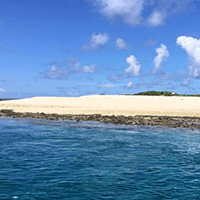List of WATER CRAB
- Age 3~Age 70
- 2~3 hours
- 09:00 / 11:30 / 14:00 / 16:30
Held from spring to autumn Fishing for Japanese eels in the brackish waters of rivers Part 1: 8:00-10:30 Part 2: 10:30-13:00 Part 3: 13:30-16:00 Part 4: 16:00-18:30 This is a tour to fish for eels at the mouths of rivers that run through Tokyo. Japanese eels are born in the western waters of the Mariana Islands. They grow in rivers not only in Japan but also in East Asia, including China, Taiwan, and the Korean Peninsula, and are known to return to the Mariana Islands to spawn. Japanese eels (Anguilla japonica), which belong to the Anguilla genus of the eel family, are widely distributed in East Asia, including Japan, China, Taiwan, and Korea. In Japan, they mainly live south of Honshu, but there have been cases of them being caught in Hokkaido. Rental tackle, fishing rod, and equipment are included, so you can participate empty-handed. Two patterns of fishing will be done: casting fishing and plastic bottle tackle fishing, using earthworms as bait. While waiting for the tackle, you can fish for goby at your feet. The main target is eels, but sometimes you can also catch goby, crabs, and seigo. The tour lasts about 3 hours. Please bring a headlamp, a handy light, and drinks. *If you want to take the fish home, please bring an aeration device (battery-powered bubbler) to prevent oxygen deficiency, a plastic case or fishing bucket to prevent escape, and a cooler box. By train: 15 minutes walk from JR Joban Line or Tokyo Metro Chiyoda Line By car: Please use a nearby parking lot Meeting place: Near the Seven-Eleven Katsushika Kosuge 1-chome store. We will send you a map in advance, so please walk to the point. Migration of Japanese eels Japanese eels spawn in the summer in the waters west of the Mariana Islands in the Pacific Ocean. After hatching, they become willow-leaf-shaped larvae called leptocephalus. Glass eels are carried by ocean currents and reach East Asia in about six months, then transform into long, cylindrical glass eels and ride the high tide into rivers. After that, their transparent bodies start to take on color, and they are called yellow eels. During the yellow eel stage, eels grow large, and eat a variety of foods, including shrimp, crabs, small fish, and insects. The environment in which Japanese eels spend their growth period is wide, from coastal areas to the upper reaches of rivers, and includes not only freshwater areas but also brackish water and seawater. After several years to a dozen years, when they grow to a size of about 40 cm or more for males and about 50 cm or more for females, they begin to mature and are called silver eels. Silver eels leave their familiar rivers and coastal areas and travel to spawning grounds from autumn to winter. They reach the spawning grounds in the Marianas in about six months, spawn, and then end their life. PS: The minimum number of participants is 5 or more.
- Age 3~Age 18
- Over 6 hours on the day
- 07:00
This is a tour for children only. Children who can travel by train will meet at the east exit of Chofu Station, and those who are being picked up by car will meet at Fukadai Nigiwai no Sato. This is a Kids Summer Homework DAY at Nogawa Nature School from 7am to around 5pm, with two meals included. Summer vacation independent research plan. One-day child care plan. Held every weekday. 7:00AM From mid-July to the end of August 7:00AM Chofu Station East Exit Ground Level (for children who can ride the train) Fukadai Nigiwai No Sato (for children picked up and dropped off by car) ~Experience Outline~ 7:00AM to 9:00AM River Fishing Experience Catfish, Nigoi (lure and crayfish) Fishing experience 9:00AM to 12:00PM Trap turtles in the river, sniff for native species & explanation of native species 12:00PM to 1:00PM GUSTO 1:00PM to 3:00PM Mainly native species Upstream tour Spring water & rice fields Search for Japanese newts, river crabs, giant dragonfly nymphs, loaches, frogs, snakes and lizards 4:00PM to 5:00PM Break McDonald's & explanation Scheduled to disband after 5:00PM From Chofu Station or Fukadai Nigiwai No Sato What to bring: Marine shoes, change of clothes, swimsuit, lots of drinks, hat, backpack, insect repellent Nogawa Nature School We look forward to your participation.
- Age 3~Age 100
- 3~4 hours
A clamming experience near Tokyo (catching location: held in an area without fishing rights)▼Meeting place: For those with cars, Lawson Myoden South Exit, Chiba Prefecture▼Time: 1 hour before and after the tide on the day, a total of 3 hours (2 hours of catching, 1 hour of BBQ planned) Search for mantis shrimp and crabs on the rocks, then use salt on the sand to collect mategai, which have interesting movements and a delicious taste, and clamming in a place where you can find large, meaty Honbinos shells, delicious Akanishi shells that look like turban shells, and occasionally clams, ark shells, other offshore clams, Shiofuki shells, and Tsumetagai shells. Among them, customers can experience the safest and easiest Mategai experience. Depending on the amount of catch on the day, participants may be given Honbinos shells, Akanishi shells, etc. Since the clamming area is sandy, please dress appropriately if you get wet or dirty. We look forward to meeting your family. After catching the fish, you can enjoy a BBQ and grill the shellfish to eat. (About an hour) We look forward to your participation. Please check the tide level website and request a day when Ichikawa City has a spring tide. *Search for (Shio MieYell Ichikawa) or (Shio Mieru Ichikawa)
最近チェックしたプラン
Please wait a moment
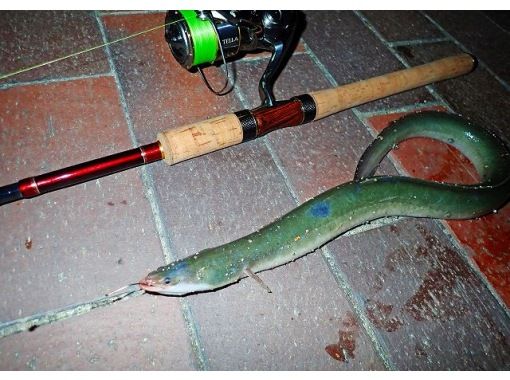
![[Tokyo, Chofu] Year-round event * Native species edition, 10-hour study of Japanese-born fish, soft-shelled turtles, catfish, loachesの画像](https://img.activityjapan.com/10/55283/10000005528301_1IgGyMt8_3.png?version=1720403479)
![[Chiba/Ichikawa] *Family friendly* Near Tokyo @ Chiba, mate clams, clams, offshore freshwater clams, seaweed catching, bonito shellfish, red crab BBQ experienceの画像](https://img.activityjapan.com/10/47181/10000004718101_atFOJjl6_3.png?version=1742522464)

